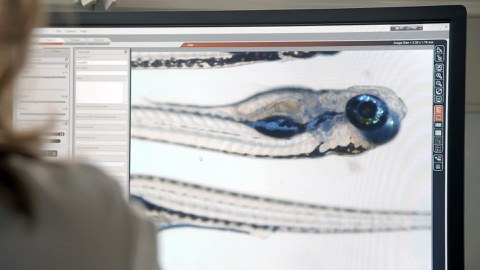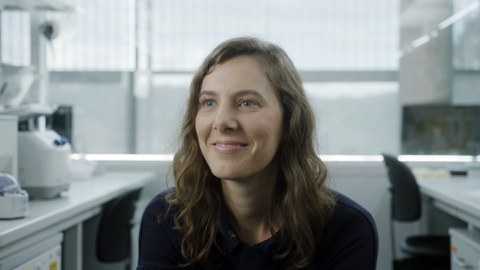Dr. Rita Mateus
© Camera: Avanga, post production: Janett Hanitzsch
Dr. Rita Mateus works as a quantitative developmental biologist in a position shared between the Cluster of Excellence Physics of Life (PoL) at TU Dresden and the Max Planck Institute of Molecular Cell Biology and Genetics (MPI-CBG). In February 2021, she joined the Dresden science community as the first DRESDEN-concept Research Group Leader. With her research group, Dr. Mateus is interested in understanding how cells coordinate precise growth and shape of tissues, allowing them to become fully functional. To this end, they are studying how do organs measure and control their size in development and regeneration, using zebrafish as a model. This is a crucial question that has remained unsolved for a long time in biology. They are aiming to elucidate this topic by studying several biophysical modes of cellular communication.
In parallel, Dr. Mateus is also very interested in understanding size and shape at the subcellular level. Hence, her group‘s second research focus involves looking at why fish are shiny. The answer lies in structural coloration: Fish cells contain light-reflecting photonic crystals, that require the formation of organelles with particular morphologies. The “shininess” that zebrafish have in their stripes allows them to efficiently camouflage in the wild. The interdisciplinary and collaborative team will unite their expertise here in Dresden and combine experimental, computational, and theoretical approaches.
Four questions for Dr. Rita Mateus
What is excellence for you?
I would define excellence as the pursuit of knowledge in a way that actually allows us to answer some of the difficult questions out there. For me, this is what excellence means, because that's what I want to do. So if I actually succeed in answering some of these difficult questions, that means I'm able to do excellent research.
What makes Dresden special?
Dresden is actually a reference for the research in the field of Developmental Biology. This is always a community that I had in mind that would be great to be working with. And towards the end of my postdoc, actually, I had the opportunity to apply for this position, and fortunately I got it. So I'm very happy to have been able to join the Dresden community and do my science here.
What are the benefits of being part of DRESDEN-concept?
DRESDEN-concept has been an important part of my work because it allows an alliance of institutions. Since my position is shared between two institutions, it allows for flexibility in communication and other daily tasks in terms of researching in a smooth way between the lab and the institutions.
What is it like to be able to do research with such a variety of other scientists?
Being very interdisciplinary and collaborative is one of the main flagships of Dresden. This is also one of the reasons I wanted to join. Since arriving here in Dresden, I've been able to establish several collaborations in the first year and a half, which is actually quite remarkable. People are very open and very eager to collaborate and join efforts to proceed in a more efficient way.


